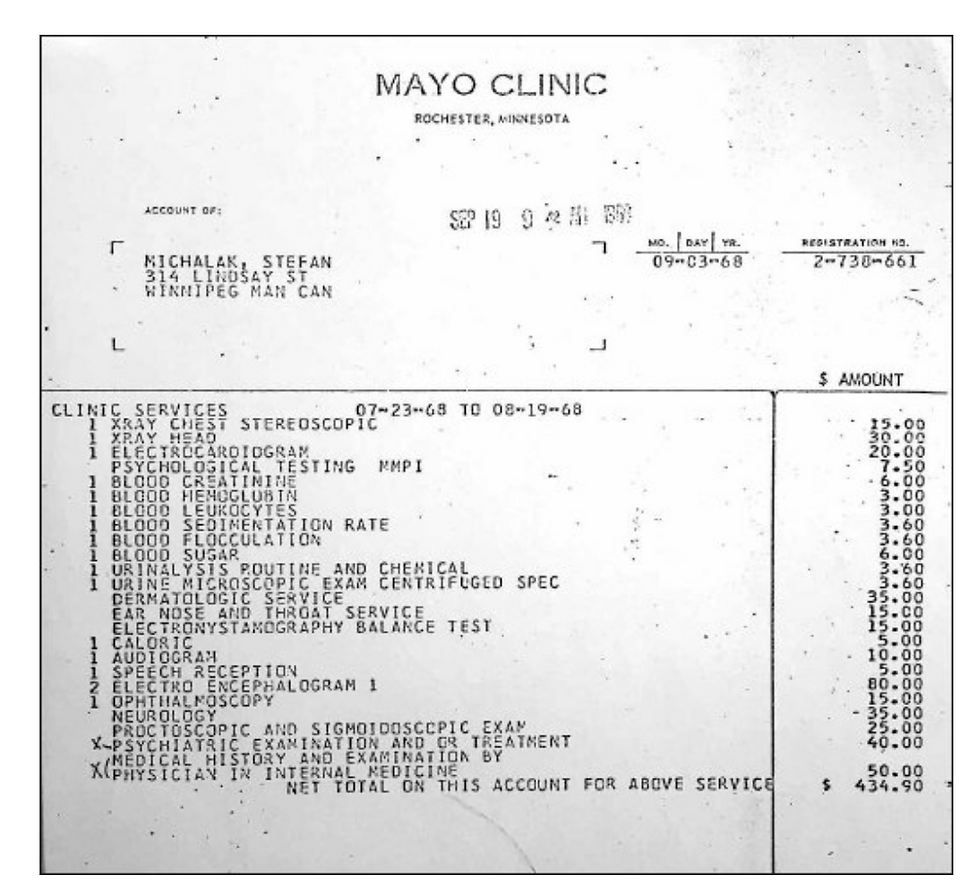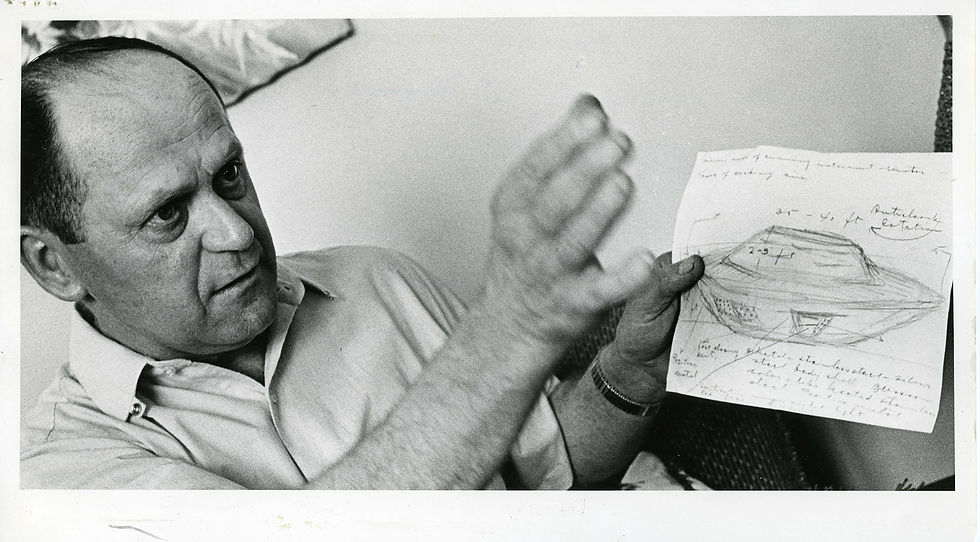This Man Touched a UFO and Has the Scars to Prove It - Falcon Lake Incident
- Cristina Gomez

- Jul 24
- 4 min read
Updated: Jul 25
On May 20th, 1967, Stefan Michalak walked out of the Manitoba wilderness forever changed. The 51-year-old industrial mechanic and amateur geologist had ventured into the Canadian Shield near Falcon Lake for a weekend of prospecting, searching for quartz and silver deposits in an area where he had previously staked mining claims. What happened next would trigger the most extensive UFO investigation in Canadian history and create a case that remains unexplained more than half a century later.
Stefan was a practical, down-to-earth man who had immigrated from Poland in 1949 and worked at the Royal Canadian Mint in Winnipeg. He had no interest in UFOs or paranormal phenomena - he was simply pursuing his passion for geology in the wilderness he knew well. Around noon that Saturday, while examining rock formations, Stefan noticed two cigar-shaped objects descending from the southwest sky, both emitting an intense reddish glow. The objects moved together as if connected by an invisible force, maintaining constant distance between them. One landed on a flat section of rock about 45 meters away, transforming into a more disc-like shape, while the other hovered briefly before accelerating away and disappearing.

Stefan's first assumption wasn't extraterrestrial - it was 1967, the height of the Cold War, and secret military experiments were common. He believed he was witnessing an experimental US military aircraft. For thirty minutes, he observed and sketched the craft, noting its seamless, metallic surface with no visible rivets or screws. He heard a low humming sound, air hissing, and detected a sulfurous smell. Most remarkably, he saw a door opening with bright lights inside and heard what sounded like human voices engaged in conversation. Being helpful by nature, Stefan called out, "Hey, you Yankee boys having trouble?" When he received no response, he tried communicating in Polish, Russian, German, Italian, and Ukrainian - all to no avail.

Emboldened by curiosity and still convinced this was human technology, Stefan approached the craft wearing his welding goggles. Through the bright doorway, he observed panels of flashing lights, beams of light, and sophisticated controls, but saw no people. When he reached out to touch the craft's surface, the fingertips of his gloves immediately began melting from the intense heat. Suddenly, three panels sealed the doorway shut, the craft began rotating counter-clockwise, and Stefan noticed a grid of circular holes on the side - like a ventilation system. Without warning, a blast of scorching hot gas erupted from these holes, striking him directly in the chest, knocking him backward, and setting his shirt and cap ablaze.

The physical evidence was undeniable and disturbing. Stefan suffered distinctive grid-pattern burns on his chest and stomach that precisely matched the vent configuration he described seeing on the craft. Over the following weeks, he lost approximately 20 pounds, experienced persistent nausea, vomiting, headaches, and blackouts. His white blood cell count dropped significantly, and doctors documented symptoms consistent with radiation exposure, though tests showed he wasn't radioactive. The burns behaved strangely - while those on his upper chest healed relatively quickly, the stomach burns would fade and return repeatedly for months. Even decades later, scar tissue could be felt beneath his skin.

The official response was unprecedented. The Royal Canadian Mounted Police, Canadian military, US Air Force's Project Blue Book, and representatives from the University of Colorado's Condon Committee all investigated the case. When Stefan's condition didn't improve, he underwent extensive medical evaluation at the Mayo Clinic in Rochester, Minnesota, where a psychiatrist concluded he was "very pragmatic, down to earth, and does not make up stories." At the alleged landing site, investigators found a 15-foot semicircular area where vegetation had been burned away, elevated radiation readings, and pieces of metal melted into rock cracks. Stefan's discarded clothing and tools tested positive for radioactivity.

The incident devastated the Michalak family. When the story broke in local newspapers, their home became a media circus with reporters, investigators, and curious onlookers camping on their lawn. Nine-year-old Stan Michalak was bullied at school, while Stefan faced public ridicule and questions about his sanity. The family later regretted reporting the incident, though Stefan felt duty-bound to warn others of potential danger, having served as a military policeman in Poland.

Stefan never claimed to have encountered aliens, maintaining until his death in 1999 that he had likely witnessed experimental military technology. He never changed his story, never embellished details, and never sought financial gain. All investigating agencies classified the case as "unexplained," with the US Air Force's Condon Committee concluding that "if physically real, it would show the existence of alien flying vehicles in our environment." Today, the Falcon Lake incident stands as Canada's most credible UFO case, commemorated by a Royal Canadian Mint coin in 2018 and documented in the comprehensive 2017 book "When They Appeared." Unlike famous cases like Roswell, the Canadian government acknowledges something unexplained occurred, the physical evidence remains preserved in archives, and the site can still be visited, matching Stefan's original sketches exactly.

Sources
When They Appeared: Falcon Lake 1967: The inside story of a close encounter by Chris Rutkowski and Stan Michalak
https://www.youtube.com/watch?v=oFyXP37Qx-I&ab_channel=HISTORY
https://www.cbc.ca/news/canada/manitoba/falcon-lake-incident-book-anniversary-1.4121639















Comments